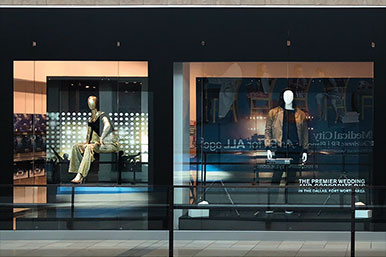From workspaces to retail stores, employing a commercial designer to bring out the best of commercial space has become a necessity. Especially in the retail industry, it’s getting harder and harder for businesses to stand out and make a lasting impression. In this regard, focusing on the design of a commercial space can prove to be a worthy investment. Commercial interior design is a term that can be applied to a vast number of public spaces. Offices, schools, banks, hotels, and restaurants all benefit in different ways from optimizing their commercial space.
What is Commercial Design?
Every business needs an individual focus depending on the impression it wants to leave. This applies to commercial space as well. Every commercial space will be used in unique ways. Commercial design is about understanding these individualistic needs and unique ways to make the best out of commercial space and optimize it to make the experience for customers and workers more comfortable and gratifying. It uses the functional architecture or structure and combines it with creative design elements to boost a space’s overall look and feel.
Commercial Design VS Residential Design
Designing commercial spaces is very different from designing simple residential interiors. Before designing any public space, thorough knowledge about legislation is necessary to protect the public.
Generally, commercial spaces demand more expert or specialist training about work practices, styles, and flow, along with knowledge about ergonomics and such.
The Purpose of Commercial Design in the Retail Industry
Retail space planning has become even more critical in this competitive age. A handsomely designed commercial space directly impacts employee and customer satisfaction. Much of the effect of commercial design happens subconsciously. Customers are likely to spend more time in a space with a good ambiance than a bland, generic space. Retail space planning Las Vegas primarily uses store layout to raise customers’ quality of experience while keeping in mind the vision held by the business and ensuring that it’s conveyed effectively. It also includes thinking about product placement and cross-merchandising.
Good retail space planning can increase sales and profit. This is done by placing products strategically and ensuring there is enough room for both customers and employees to navigate the store easily. Even small spaces can be designed and planned in a way that makes customers feel cozy instead of suffocated. Store space most definitely needs to be maximized, but if there are products cluttered around and stuffed into every available space, the chances of customers staying long enough to check out every item are slim to none. Instead, they get overwhelmed and leave. Retail space planning can help target all these areas that lead to poor customer satisfaction and low revenue.
The Work of Commercial Design in Commercial Spaces
Commercial design in Las Vegas is a game of balancing. What looks the best may not necessarily be functionally useful, and a heavier focus on functionality may end up with a commercial space looking unappealing and unsightly. Many people still believe it doesn’t matter as much for a space to look good as long as the job it’s built for gets done. The commercial design of an interior is the first impression on customers, clients, or stakeholders. When the balance of form and function is executed perfectly, greater sales are made, and the overall experience is enhanced on every front.
When designing the infrastructure of a building that businesses will occupy, the architect or designer’s priority is to guarantee structural integrity. Optimal functionality should be promised. What follows structural integrity is design. A commercial interior design firm in Las Vegas can help turn a business into a brand by paying attention to details such as color schemes, textures, furniture, and fittings. These details are unique to every business, just as every business has a unique objective. An excellent commercial designer will help bring that objective to life in commercial space design by building an exceptional understanding of branding and workplace culture and practices.
Commercial design can be used in a range of spaces, including:
- Shopping malls
- Healthcare facilities such as hospitals, waiting rooms, and examination rooms
- Hospitality spaces like hotels, restaurants, and bars
- Government buildings like fire stations, police stations, museums, train stations, and libraries
- Recreation centers, stadiums, and gyms
Tips for Commercial Designing
With how fast trends are changing, keeping the structure of a commercial space rigid might prove to be a bad idea. Instead, keep it versatile and allow for easy alterations and revamps. Technology has evolved the way almost everything is done, and commercial designing is no different. Technology can be used for functioning, sales, and communication and bring greater ease of use all around.
As stated previously, aesthetics can be as important as functionality. Keeping the aesthetic and form of space up to date by implementing newer design elements is crucial. Stability and functionality need not be compromised in the process at all.
In sectors where customer experience and satisfaction are critical, the priority is making customers feel at home. If there is any way to allot spaces that can be personalized, it’s best to go for it. For instance, restaurants or hotels can include garden, poolside, or terrace seating. Considering personal preferences and doing the best to incorporate that into a commercial space makes a world of difference for customer satisfaction. Lastly, and perhaps most importantly, the one factor that cannot be compromised upon is safety. Going for bolder and breath-taking structures and designs means very little if safety cannot be promised along with it. There are several safety regulations to abide by, and doing so is the moral obligation of commercial designers and their clients. Commercial space doesn’t need to be compromised upon much and can be all: functional, aesthetically pleasing, unique, modern, and safe.

